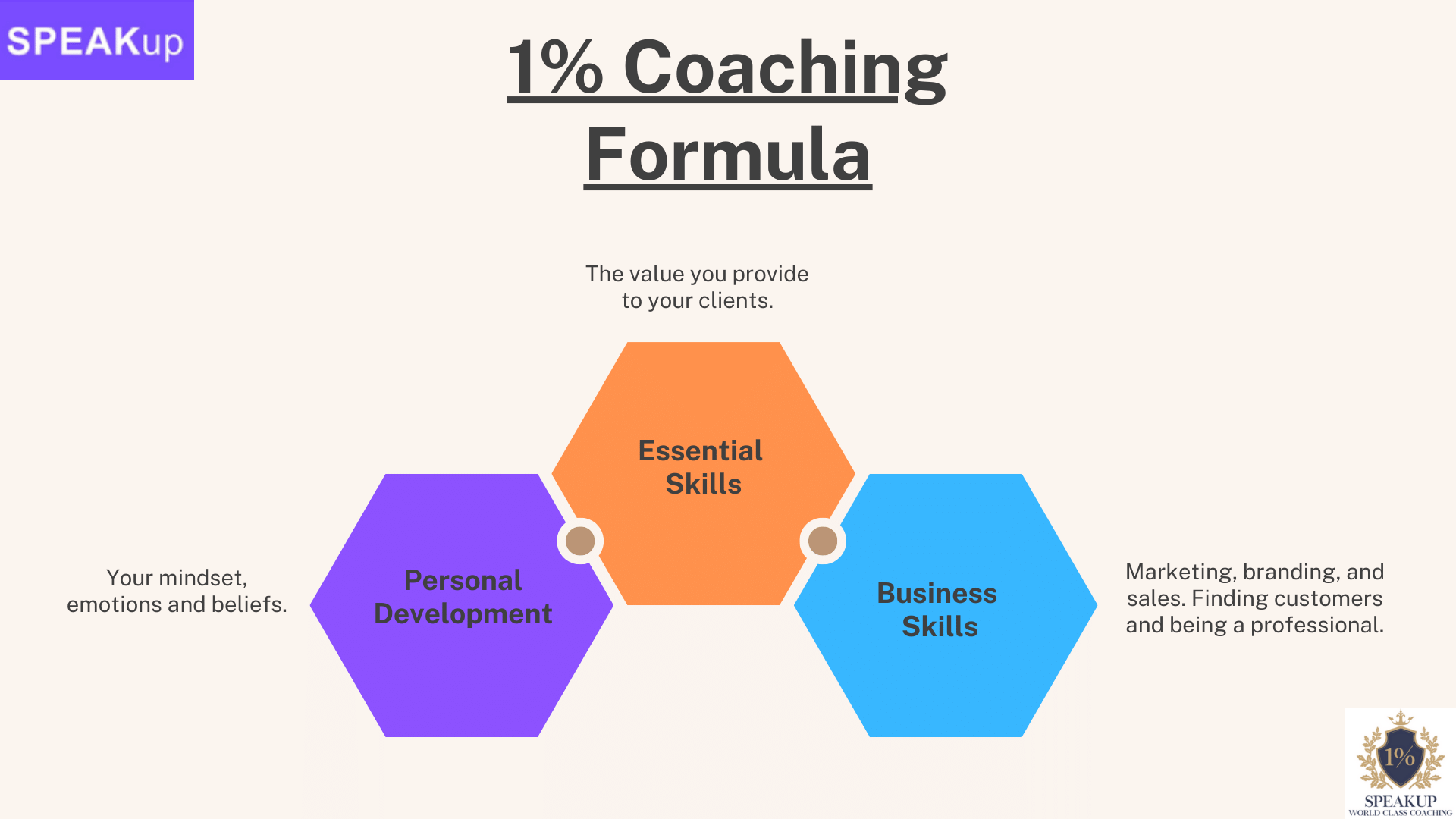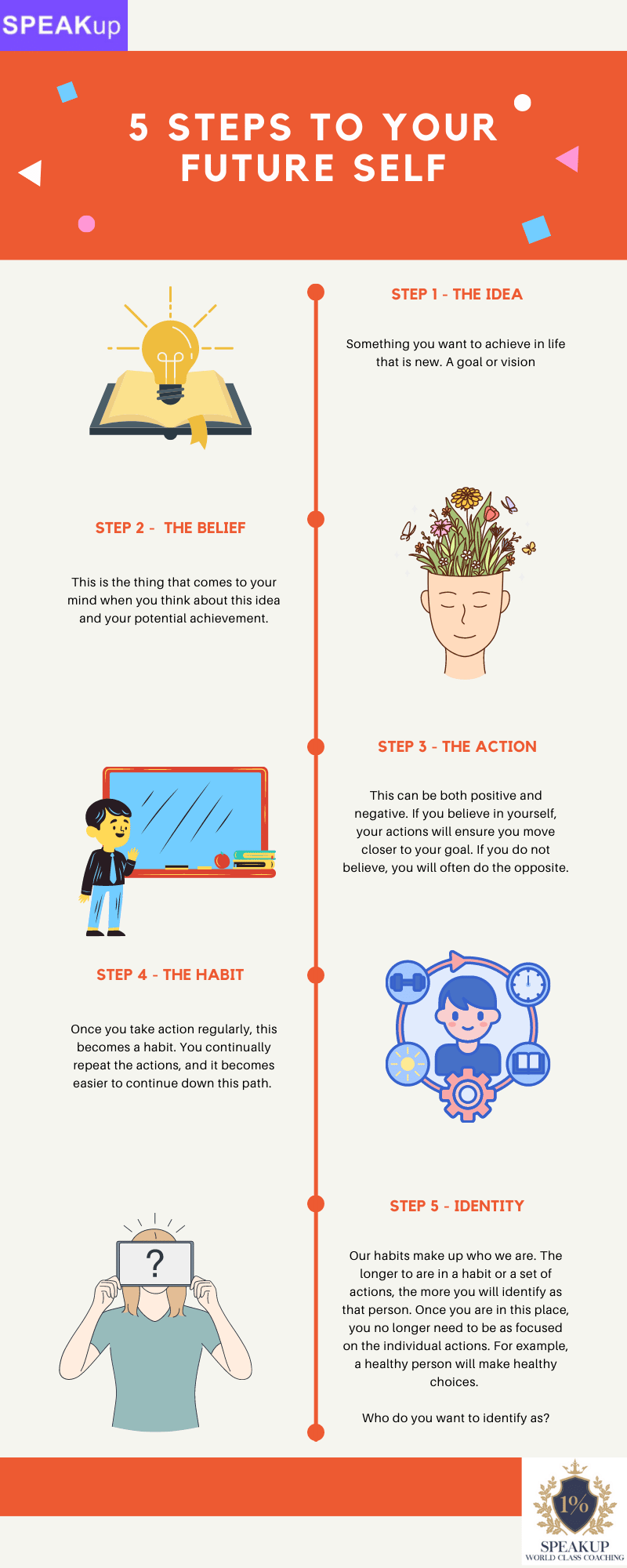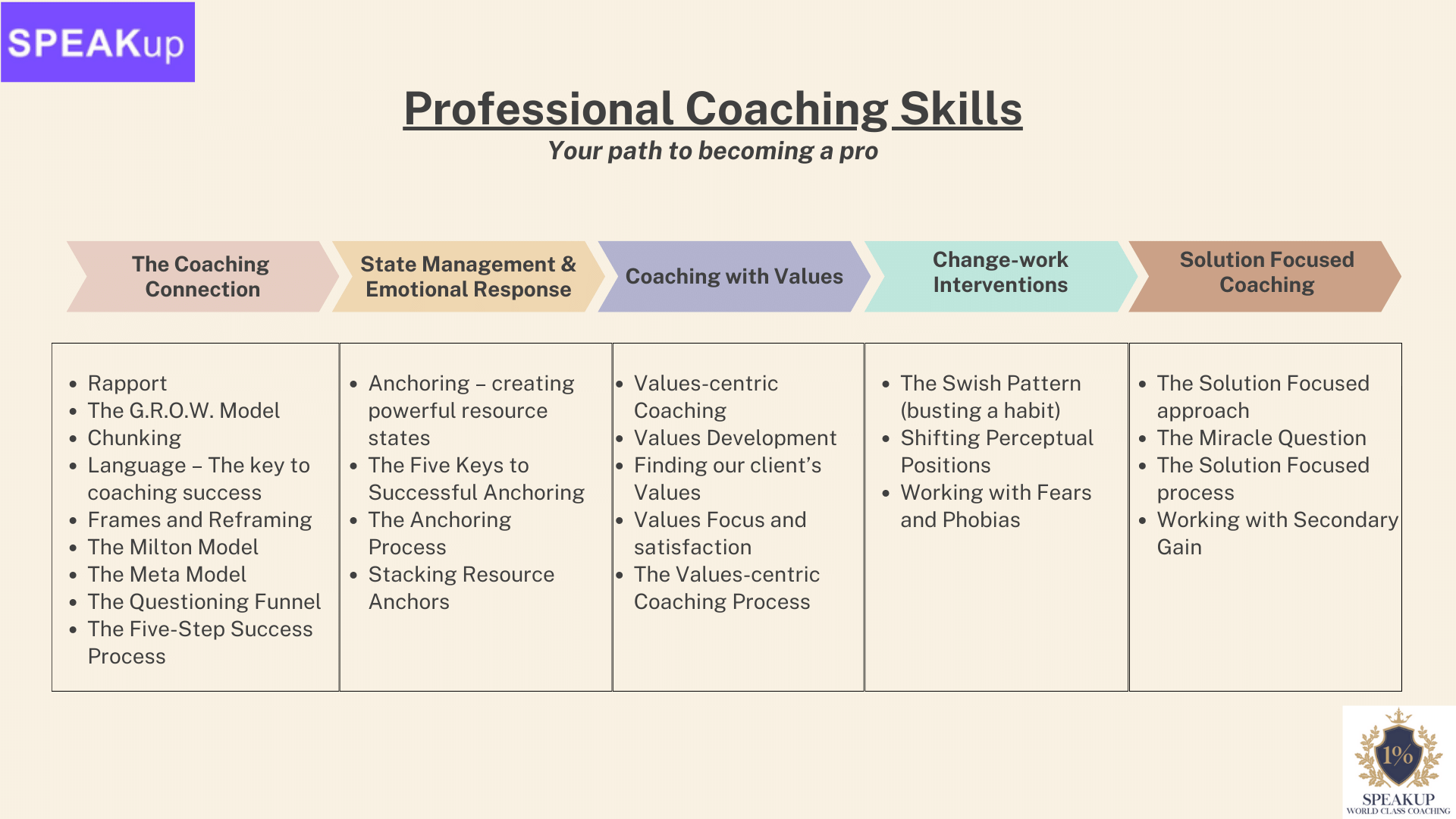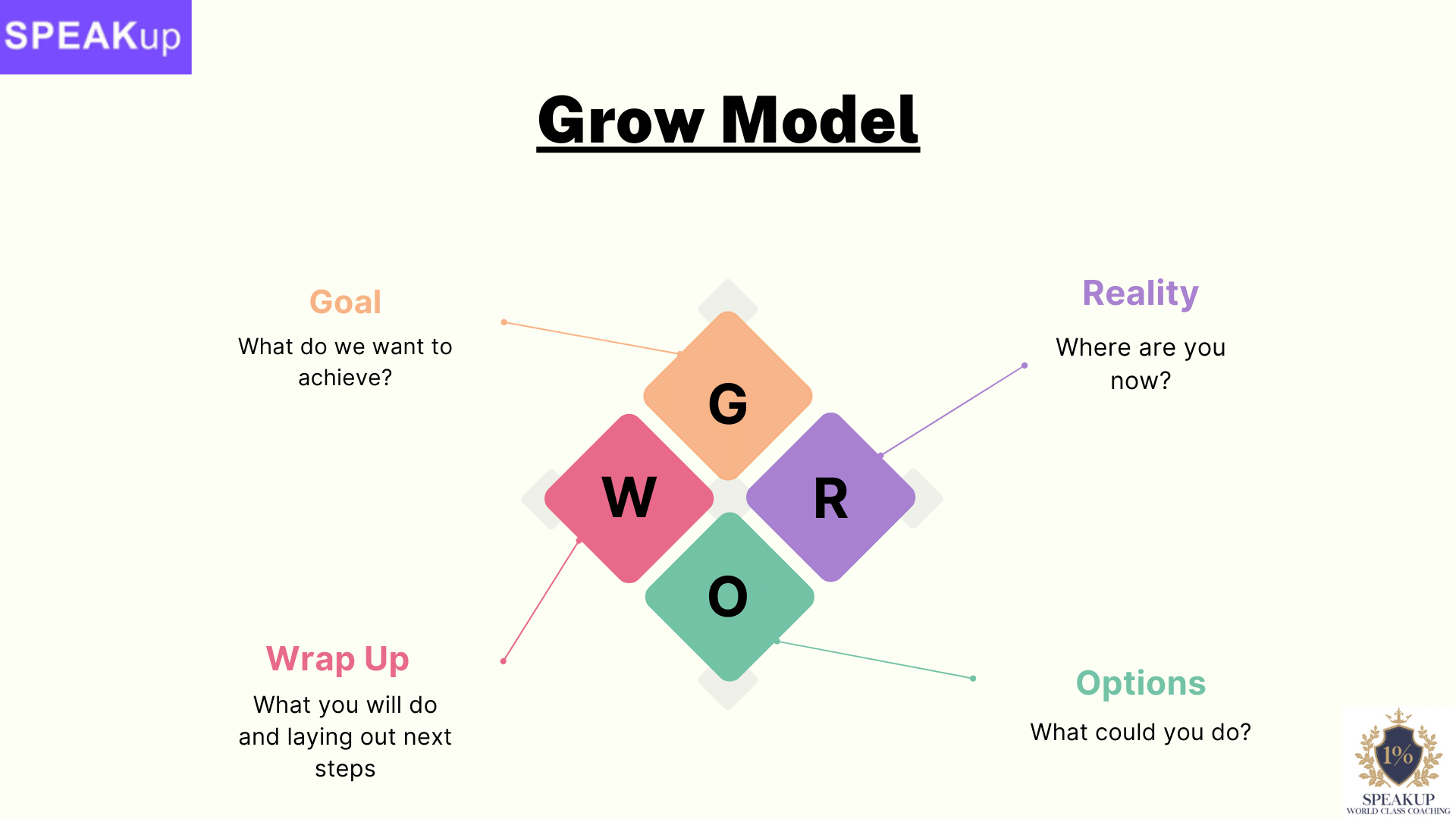Getting Started With Life Coaching, The Mindset, and Skills
Do you love the idea of becoming a life coach but are still determining the best way to begin? Let’s face it; there is so much information on developing holistic coaching skills that it can be hard to find the right path. Unfortunately, this can lead potentially great coaches like you to procrastinate when transitioning to coaching due to things like imposter syndrome.
We have worked with over 10’000 people with training to become professional coaches (life coaching, mindset coaching, business coaching, etc.) and have designed a beginner’s guide to help you become a life coach. We will discuss smart goals, the GROW model, and practical coaching skills (including NLP). This will assist you in getting started on your coaching journey and learning how to do this as a profession.
Questions to see if coaching is for you:
- Do your friends and family go to you for advice and guidance?
- Have you been through your ups and downs that led you to find personal development and the idea of coaching?
- Do you like the idea of starting a coaching career in your own time, even around your existing job or lifestyle? (many coaches build their business in the background first)
I remember starting my career in coaching, and there were so many things to focus on. At first, I didn’t have a coach or any guides. I tried everything, but I didn’t get very far because I didn’t have an effective plan. I scared a few people off because I wasn’t acting very authentic (I was following the crowd) or professional. Being a coach is incredibly fulfilling and is something I am eternally grateful for, so I am happy to share these insights with you.
Many people need help knowing where to start, but we have broken down the key steps for starting, starting well, and doing it on a budget. This will provide a clear guide to the next steps without fluff. If you follow these steps, you could be on your way to providing your future coaching clients with transformational support and having the career of your dreams.
The Core Areas Covered in This Guide:
- Understanding the 1% Coaching Formula
- Personal Development
- The imposter syndrome
- Getting into the right environment
- Essential Coaching Skills
- What are the essential skills that coaches use today?
- How to use the GROW model to help people
- Ethics and professionalism
- The Business of Coaching
- Your Audience
- Creating something remarkable
- Marketing you (branding and marketing)
Understanding The Coaching Formula
We have broken down your beginner guide to becoming a life coach into three big sections, these are:
- Personal Development
- Essential Coaching Skills
- Business Skills
These are your crucial areas to invest in, and they are in the correct order.
The first area is your personal development. This area covers your mindset, emotions, beliefs, and attitudes. If you are aligned in this area, you regularly take action toward your goal and feel confident that you will reach the outcome.
The second area is your essential coaching skills. This is your ability to provide value to the people you work with and help them make the changes they need in their lives.
The third area is business skills. This revolves around marketing, branding, and sales—your ability to find customers and have a strategy to bring in an income.
Each of these areas is equally important. These are necessary for you to be the most passionate coach in the world but be stuck with no customers and nobody knowing who you are!

The Imposter Syndrome
After speaking and working with thousands of new and developing coaches, the biggest thing I have seen hold them back is themselves. They have a lot of passion, personal experience, and potential to become a great coach, but they always need to get closer to their goals.
Some things we hear are:
I’d love to start a coaching business, but I’m not sure where to begin, I’m lacking in confidence, and I’m not sure people will take me seriously.
Can you relate?
These things are frequent and often feel rational. They come up for new and developing coaches, but they have 1 thing in common. They are incongruences and revolve around Imposter Syndrome.
Wikipedia defines Imposter Syndrome as ‘A psychological occurrence in which people doubt their skills, talents, or accomplishments and have a persistent internalized fear of being exposed as frauds’ – link here for further details
This means the person wants to achieve something but doesn’t believe in themselves. Often, what happens is:
Step 1 – They have a vision of what they want to do
Step 2 – They don’t believe they can get there due to a lack in some area (skill, knowledge, experience, etc)
Step 3 – They don’t take action in this area (due to a fear of judgement, failure, or something else)
Step 4 – They repeatedly fall into the same situation and can’t find the energy or action to make a change, even if they want to.
Step 5 – They start to wonder if they are the kind of person who will ever become a coach…
Here is an image that outlines this

What would happen if you started to change the actions that you are currently taking?
That’s right; you would begin to see different results, build better habits and become another person. Don’t worry about not feeling perfect on day one. Many experts have developed their skills over many years, but you must start somewhere.
Remember that you don’t have to be great to start, but if you want to be great, you have to start.
Many people refer to this as ‘acting as if’. Taking steps as if you were a coach and acting like one. By taking these steps, you may end up becoming one. You could even turn the table upside down and work backward:
Step 5 – Who is the person you want to identify as?
Step 4 – What habits do they keep up for others to see them as this person? What habits do they follow to maintain their confidence continually?
Step 3 – What actions do they regularly take (however small they may be) to build these effective habits?
Step 2 – What beliefs do they maintain to reinforce who they are?
Step 1 – What ideas or goals would make sense for this person to have at the start of their journey?
Getting in the Right Environment
You are the sum total of the 5 people you spend the most time with
Jim Rohn – Motivational Speaker
This was a quote I heard years ago by the legendary motivational speaker Jim Rohn. At the time, I was building my coaching business. I was focused on a ‘strategy’ and ‘working hard,’ but I didn’t know what I was doing. I used to be a chef, so all the people around me were my family, school friends, and other chefs. They were the best people to inspire me to take the next step with my coaching. Many of them had no idea what coaching was or why I was doing it (this certainly didn’t help!)
I wanted to get around more interesting and inspiring people. I had just read ‘Think and Grow Rich’ by Napolean Hill, and the book discussed developing a mastermind group. Gathering people together to talk about goals and challenges to help provide perspective and insight. I went on to develop a mastermind group in my city and started to surround myself with interesting people.
I soon found that personal development and courses were a magnet for these people, and I was conversing with people much further down the line. This inspired me to think differently, and within a year, I quit my full-time job as a chef and committed to coaching (and I was making enough money to survive!).
Are you around people and information that inspires you and encourages you to pursue your goals?
The Key Steps to Improve This:
- People. These must be people who are passionate but also taking action. Some will be where you want to be and can set a positive example. Others are in the same place and will be excellent for accountability.
- Information. You can get around great information with books, podcasts, youtube channels, and social media. Be focused on who you follow and listen to; they should be people that can address your challenges and not be just ‘general personal development information. Ensure you are balancing learning and action-taking. Too much learning can be a source of procrastination if you are not acting on the information.
Essential Coaching Skills
Partnering with clients in a thought-provoking and creative process that inspires them to maximize their personal and professional potential. The process of coaching often unlocks previously untapped sources of imagination, productivity, and leadership
International Coaching Federation – A definition of coaching
We all have goals we want to reach, challenges we’re striving to overcome, and times when we feel stuck. Partnering with a coach can change your life, leading you to greater personal and professional fulfillment.’
The Coaching Process in 3 Core Areas:
- Helping people to identify clear and well-formed goals
- Overcoming any blocks or barriers that are preventing them from making progress. This is often in the form of internal limiting beliefs or a (real or perceived) limited external resource (time, money, experience, skill, etc).
- Working with the client to make progress on their goals. Structuring their actions with them so they have a congruent plan of action (aligned with who they are) they can use to take effective action and be empowered.
Professional coaches these days are arming themselves with a variety of skills, so they can provide a more holistic level of support (not just solving the surface-level challenges). Thus, they will typically be adding in skills within NLP and Timeline coaching, as well as their traditional coaching tools.
Here is a list of things that coaches will develop on their journeys to becoming qualified:

In each section, coaches will apply many skills in their work. The coach will adapt each session depending on the client’s needs and use the relevant skills.
The Grow Model
Effective coaching is done with refined systems and models with an excellent track record. This is important because it provides a system to work with clients that has a consistent track record and allows your client a greater chance to achieve what they want. Coaching often frustrates both parties and presents few results without using models like this.
The GROW model is one of those models that many coaches use. In this next section, we will explain what it is and how to use it as a coach.
This model of coaching takes, as its basis, the following simple guide:
● Know what it is that you want
● Know your precise starting point
● Know what you need to get it
● Have the flexibility to adapt your behaviour
● Have a plan of action

Goal
People following scheduled action commitment and accountability are 76% more likely to achieve their goals. Find more information on this study from this INC article.
Use the SMART goal-setting approach when helping your clients to find a clear and well formed outcome to work towards. Many coaches use this to help their clients reach their goals. For example, having a goal of ‘I want to be a life coach’ needs work. We will use the process below to make these goals much more refined.

Specific
This means adding more information about your goal. For example, some great questions you can ask could be:
- What exactly do you want?
- What are the important details?
Example – ‘I want to be healthier’
Questions – In what ways do you want to be healthier? What are some specific outcomes you’d like to achieve?
Measurable
Some goals are more ambiguous than others. Typical examples are health, wealth, and happiness. These are not easily defined as is described in this classic Bob Marley snippet below. However, having a clear guideline of what you mean by your goals and how you will keep track ensures you know how to reach the end outcome. This often requires more tangibility.
Example – ‘I want to be happier’
Questions – How will you track your results? How will you know when you have reached this goal? How would you define happiness?
Attainable
This means setting a goal that you can reach based on your skills, experience, mindset, timescale, etc. If you set unreasonable goals due to a lack of resources or knowledge, you may be setting yourself up to fail. As a coach, you can help your clients set goals they feel nervous about but believe they can achieve.
Questions – What resources do you have at your disposal to help you reach this? How confident are you in your ability to attain this on a scale of 1-10?
Relevant
This means being focused on the outcome you want to achieve and not letting your goal become a big broad thing that affects many other areas of your life. If you are working with a coaching client on their confidence, their goals should be relevant to this area.
Questions. What is your ultimate end goal? How does this tie into your end goal?
Time-based
Adding a deadline to your goal builds motivation and action to achieve this. Ensure you have a deadline in mind. Adding milestones can make this more visible and break down the feeling of a big goal being ‘overwhelming’.
Questions. When do you want to achieve this goal? Break down your goal into smaller sections; where do you want to be in 1, 2, or 3 months’ time?
If SMART goals are new for you, pick a personal or professional goal you have and take yourself through this process to understand how it works.
Let’s go back to the GROW Model…
Reality Check
Identify performance blocks – what is preventing the client from achieving their outcome?
These can very often fall into 4 areas:
1. Knowledge – a requirement for training
2. Skill – perhaps development through on-the-job training or mentoring
3. Attitude – an opportunity to use your coaching skills
4. Aptitude – this is often a tough obstacle and will require some patient exploration or even some frank talking
Sit down with your client and ask them questions in these areas. Of course, your questions will often depend on the goal itself, but these 4 areas are very common.
For example:
A client who has a goal of becoming healthier and losing 20 lbs of weight in 90 days for their holiday
1. Knowledge – What knowledge do you have to lose weight? Which areas are important? (nutrition, exercise, lifestyle, etc.)
2. Skill – What skills do you have to make this a reality? (fitness level, habits of eating healthier, etc.)
3. Attitude – What is your current attitude toward weight loss and healthfulness? What are your habits and feelings around nutrition?
4. Aptitude – Have you had experience with weight loss in the past? What have been any health journeys you’ve personally been on?
What resources does your client have?
Here, we are facilitating the client in clearly identifying the resources present AND those required. This ties into your SMART goals but might include a deeper dive in this section.
This can include both MATERIAL resources – finance, equipment, people, ‘things’ – and ABSTRACT resources – so consider the following:
● Financial – What finances do you have at your disposal? Will it need a financial boost to become a reality?
● Knowledge – What training or research is required to ensure the client has all they need?
● Physical support – People: family, friends, colleagues, contacts
● Things – books, boxes, etc.
● Personal qualities – Confidence, assertiveness, calm, etc. These can be vital states in meetings, presentations, etc.
● Time – What constraints are there? Is there an imposed time limit to achievement?
Once you understand the starting point, you have a better idea of how much work will be required for the client to reach their goal. By knowing which areas they can lean on as strengths, you can help them work smarter (not just harder).
Options
As with so many journeys, there are often many routes that can all lead to the same destination. For example, you may use Google Maps to assist you in planning a car journey. You will then see various routes based on fastest, cheapest, scenic, or avoiding specific places. All are valid, and all offer different benefits.
It is often the same with coaching a client. Once you have established the Goal and done the Reality Check, you can have fun exploring all the options for getting from one to the other.
Some things to consider:
Routes – Which route is most effective for your client? The quickest, cheapest, least upheaval, etc.
Obstacles – Having identified any performance blocks or obstacles, you can consider the options for overcoming these. This may involve setting smaller goals to achieve the main one.
Resources – You’ve already explored what resources your client will require in making their journey. What are the options for getting any resources identified? Perhaps they need to learn something to help make this journey easier.
In examining the options for achieving their outcome, your client should be encouraged to explore all of their options in a positive frame so that they select a route to which they can commit and be compelled.
Only when your client has a CLEARLY IDENTIFIED route to their success should you move forward.
Wrap up
The closing part of the coaching session is the wrap-up (sometimes referred to as ‘where now?’)
In closing your session with your client, you must ensure a sense of ownership and urgency is taken on.
This can be summarised simply as:
- Agree on the actions of the client
- Accountability (from the coach)
- Make the next steps specific and define the timing
- Feedback – giving constructive feedback on how their plan has been laid out.
Here is a link to some excellent GROW model questions for you to use with potential clients.
Ethics and Professionalism
Would you want to be coached by someone who hasn’t had any formal training? Especially when thinking about your personal, business, and relationship goals, many people opt to work with a professional with extensive training. This puts you at ease to know that you are in safe hands.
But I can’t afford it…
The average spend for a university degree is £9,250 per year
37% of the UK population goes to university and does this with little thought of the financial impact. It sets them up for a profession, and they are willing to commit to this process.
When you consider the cost of learning a new skill in professional coaching, it will take less than 1 year and be much less than the standard university fees. Many benefits will be in learning professional skills, meeting other people, and having a plan of action. Another huge benefit is being a part of an ongoing community of people who can support you after becoming qualified. The hard part about coaching can be the business, getting set up, and finding people willing to pay for this service.
So if you want to play it safe, don’t wing it; invest in some training and guidance. This will fast-track your development and help you figure out all the gaps in your knowledge. You are coaching people, ensure you have the skills to support them!
The Business of Coaching
Helping people with coaching is a transformative thing. This is an exchange of a valued service for finance. Clients will pay the coach for well the service is offered and how tailor-made it feels for the person. Remember that coaching is fulfilling work, but your clients must be invested in it to take it seriously and see the results.
Clients that pay – pay attention
Josh Dykes – The SPEAKup Challenge
One of the first things to consider is who you want to help as a coach. Much of the work you do with each client within coaching will have a similar feel. You are working with people with challenges in some area and need support. However, to stand out to a certain audience, you have to have a specific person in mind to help.
There is a great article by Kevin Kelly titled ‘1000 True Fans’. The idea behind the article is that if you find 1000 people who know and love what you do, you will live a great life. You can also support them incredibly because they are a smaller pool of people (rather than helping many people with many things). This is an excellent attitude to adopt in coaching.
Finding a specific audience avatar will help you with:
- Your marketing (knowing what to say that will support and attract these people)
- Your services (building services that have a ‘tailor-made’ feel)
- Your skill (learning the nuance of your audience needs and how to support them – becoming the ‘go to person’ in your field)
- Your competition (when you have a niche, you compete with fewer people and find it easier to stand out to the right person)
Here is an overview to help you define your audience avatar:
Demographics
Who your is and what they look like
- Age
- Gender
- Relationship Status
- Occupation
- Ethnic/Cultural Background
Psychographics
What your audience cares about and their personality
- Personality type
- Values (what drives them)
- Their experiences
- Hobbies and interests
- Goals and ambitions
Spend some time completing the above for your audience.
Once you have decided on your audience, think about their problems and goals. Create the content on social media that relates to these things, and you will start attracting relevant people. Over time, you will build a community of these people and become the ‘go to person’ in this area.
Marketing You
I remember starting my coaching business many years ago. I decided that I would help people, I got some accredited qualifications and was ready to start helping. The problem was, I had no idea how to find clients. I was passionate about coaching, but I did not know what made me stand out and how to approach branding. These are very important elements because they help to provide you with a ‘feeling’ from your audience.
For all those people that drink coffee, think about where you go and why you choose that place:
Factors to consider:
- Price
- Flavour
- Customer Service
- Mission statement
- Seating
- Wifi quality
- Atmosphere
If I am having a busy day, I love sitting on the comfy couches in Cafe Nero. In general, I will go to Starbucks for the flavour, even though I may pay more for it than in other places. The reason that I go to these places is because of the ‘feeling’ I get. They are consistent each time I go there, and it brings me a level of comfort.
As a coach, you will be doing the same thing. Some questions to consider when thinking about building your brand are:
- Your mission (the impact you want to have on the world)
- Your Values (the things that are important to you, like ‘leadership’ or ‘community’)
- How you portray yourself online (language, images, choice of content)
Once you have decided on these key elements, start incorporating these things into your marketing, and you will develop a personal style that will separate you from the rest of the people out there. Let’s face it, the coffee from Costa, Starbucks, Pret a Manger, etc., is quite similar, but most people have a ‘go-to brand’ that they prefer and stick to. This is what you are going to cultivate as a coach.
Next Steps
If you have been thinking about coaching for a while and want to get started. Set your SMART goals, take the action steps outlined in this blog, and you will start seeing results. If you want some help and support with live training, come to our free live coaching introduction days and meet our training team. The free, high-quality events will discuss our triple-accredited coaching programmes (your next step to adding credibility).
Good luck!




Leave a Reply
You must be logged in to post a comment.